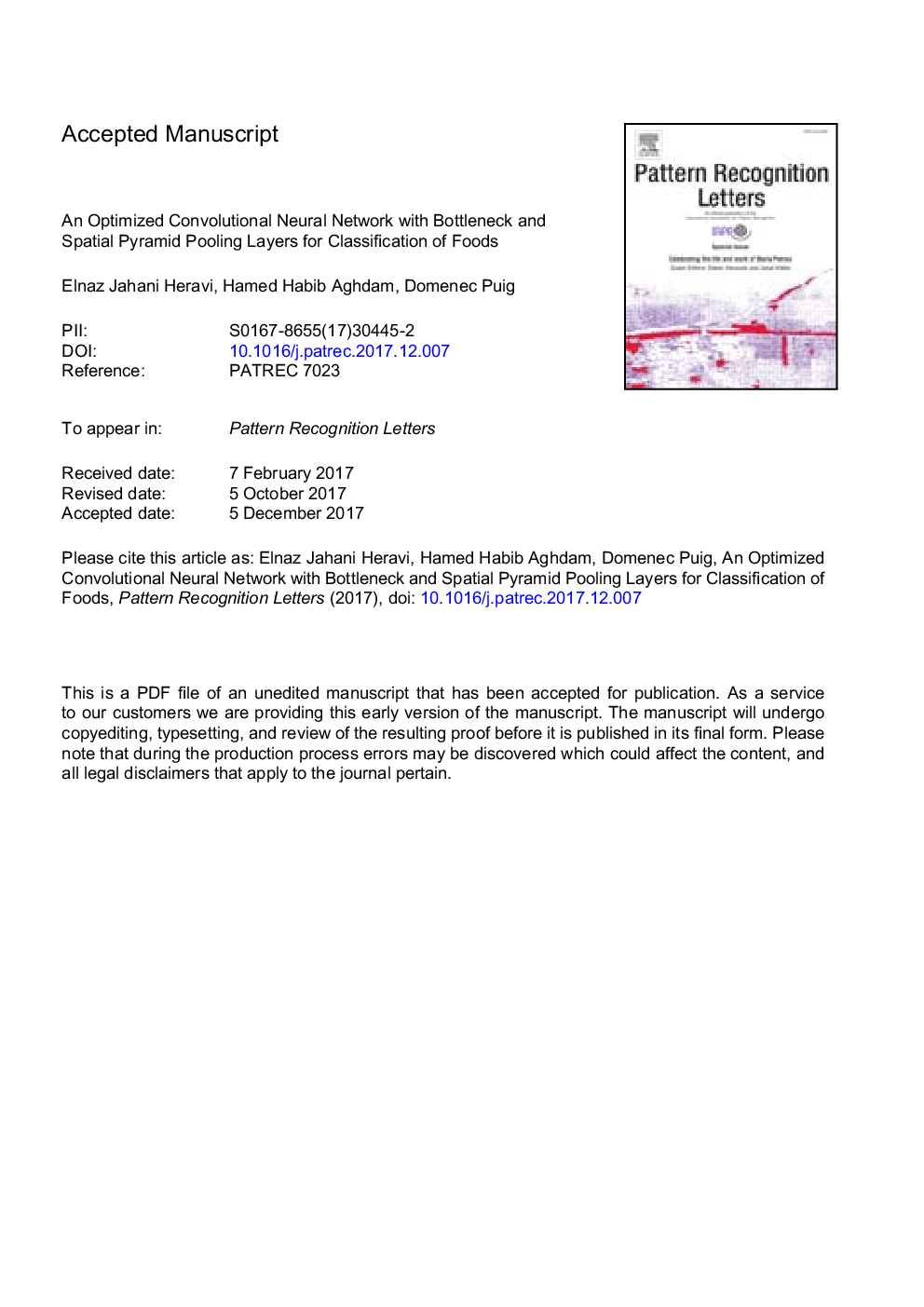| Article ID | Journal | Published Year | Pages | File Type |
|---|---|---|---|---|
| 6940506 | Pattern Recognition Letters | 2018 | 12 Pages |
Abstract
Keeping record of daily meal intake is an effective solution for tackling with obesity and overweight. This can be done by developing apps on smartphones that are able to automatically recommend a short list of most probable foods by analyzing the photo taken from food. Then, the user chooses the correct answer from the short list. Hence, the automatic food recognition system must be able to recommend an accurate list. In other words, it is not essential for these apps to have a very high top-1 accuracy. Considering that the app will show the list of 5 most probable foods, the food recognition system must have a high top-5 accuracy. A food recognition system is usually developed by adapting knowledge of state-of-the-art networks such as GoogleNet and ResNet to the domain of food. However, these networks have high number of parameters. In this paper, we propose a 23-layer architecture which has 99.14% and 96.63% fewer parameter compared with ResNet and GoogleNet. Our experiment on Food101 and UECFood-256 datasets shows that although our network reduces the number of parameters dramatically, it produces more accurate results than GoogleNet and its accuracy is comparable with ResNet.
Related Topics
Physical Sciences and Engineering
Computer Science
Computer Vision and Pattern Recognition
Authors
Elnaz Jahani Heravi, Hamed Habibi Aghdam, Domenec Puig,
